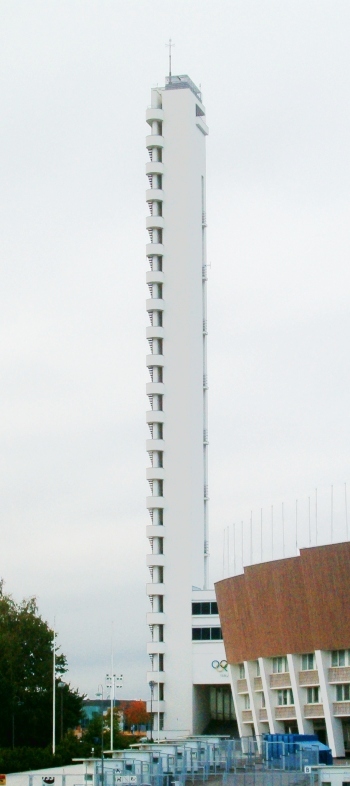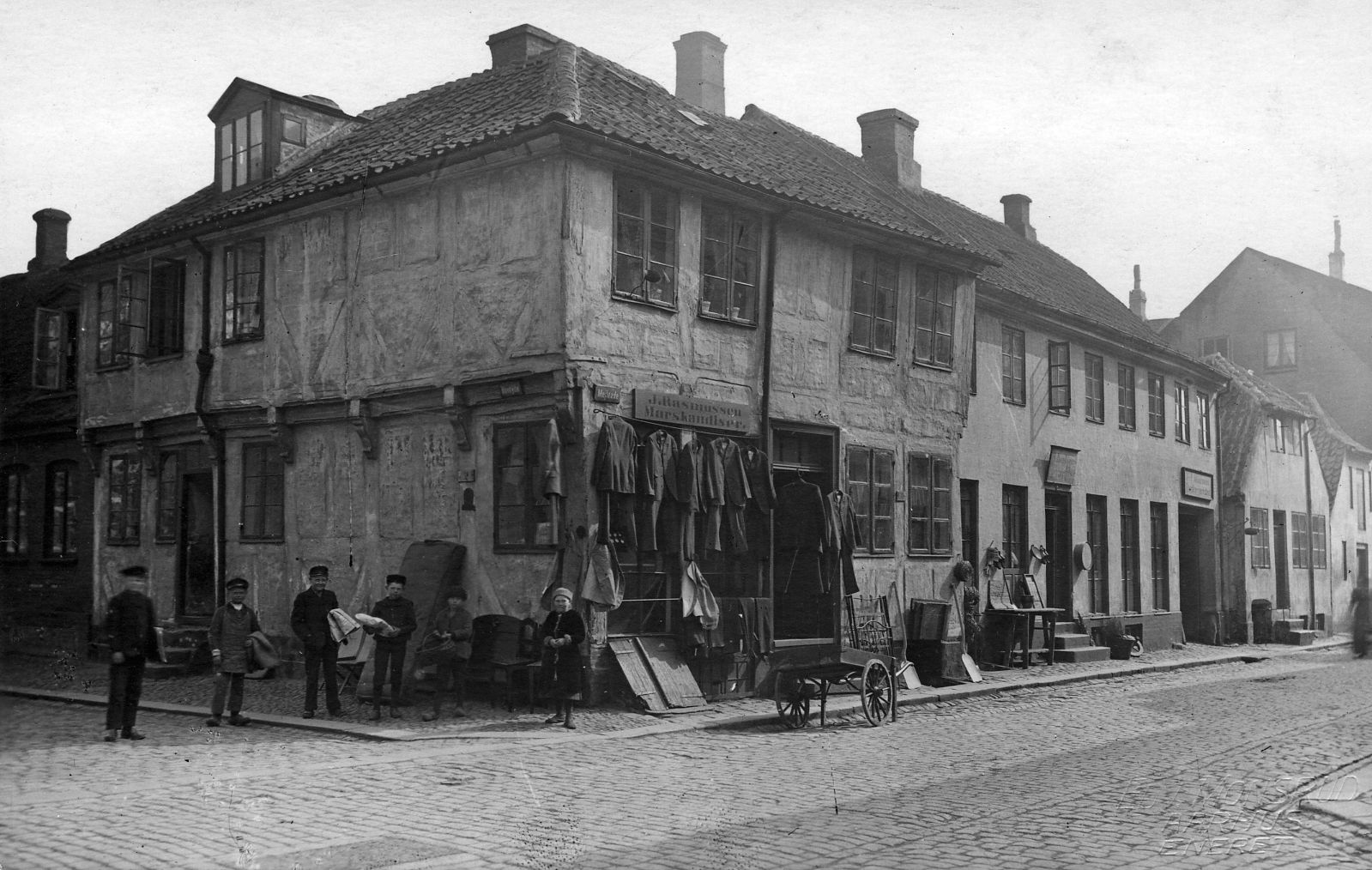|
Nørre Stenbro
Nørre Stenbro is a small neighborhood in the city of Aarhus, Denmark home to some 3,000 residents. The neighborhood is part of the Aarhus C district and borders the neighborhoods of Indre By south and west, Aarhus Docklands in the east and Trøjborg north. The residential area of Nørre Stenbro is delimited by the streets ''Nørre Boulevard'', ''Østboulevarden'', ''Østbanetorvet'', ''Kystvejen'', ''Nørreport'' and ''Nørrebrogade'', but the large Nordre Cemetery and the smaller residential quarter of ''Skovvejskvarteret'' is also part of the same registration. The School of Architecture and the train station Østbanetorvet station, part of Aarhus light rail line, are both located at Nørre Stenbro. The name The name Nørre Stenbro is a recent invention from 1971 when the local residents organization was established and adopted it. The name is believed to be a reference to the colloquial term "Stentoften" previously used to reference the area beyond ''Nørreport''. History ... [...More Info...] [...Related Items...] OR: [Wikipedia] [Google] [Baidu] |
Country
A country is a distinct part of the world, such as a state, nation, or other political entity. It may be a sovereign state or make up one part of a larger state. For example, the country of Japan is an independent, sovereign state, while the country of Wales is a component of a multi-part sovereign state, the United Kingdom. A country may be a historically sovereign area (such as Korea), a currently sovereign territory with a unified government (such as Senegal), or a non-sovereign geographic region associated with certain distinct political, ethnic, or cultural characteristics (such as the Basque Country). The definition and usage of the word "country" is flexible and has changed over time. '' The Economist'' wrote in 2010 that "any attempt to find a clear definition of a country soon runs into a thicket of exceptions and anomalies." Most sovereign states, but not all countries, are members of the United Nations. The largest country by area is Russia, while the ... [...More Info...] [...Related Items...] OR: [Wikipedia] [Google] [Baidu] |
Port Of Aarhus
The Port of Aarhus (Danish: Aarhus Havn) is a deep-sea port located in the city of Aarhus. It is the largest container port in Denmark, handling more than 50% of country's container traffic. The Port of Aarhus shipped roughly 8.4 million metric tonnes of cargo in 2017. Geography The Port of Aarhus is located in central Aarhus at the mouth of the Aarhus River on the Bay of Aarhus in Kattegat. The port faces Helgenæs to the East, Samsø to South East and on the coast the Marselisborg Forests lies to the South and Riis Skov lies to the North. Administration The Port of Aarhus is owned and managed by Aarhus Municipality as a financially independent company. The mayor and two city council members are automatically granted seats on the board of directors after municipal elections with the mayor assuming the position of chairman. The board consists of 7 members; 3 city council members, 3 members with a background in business and 1 representative elected among the employees of t ... [...More Info...] [...Related Items...] OR: [Wikipedia] [Google] [Baidu] |
Condominium
A condominium (or condo for short) is an ownership structure whereby a building is divided into several units that are each separately owned, surrounded by common areas that are jointly owned. The term can be applied to the building or complex itself, as well as each individual unit within. Residential condominiums are frequently constructed as apartment buildings, but there are also rowhouse style condominiums, in which the units open directly to the outside and are not stacked, and on occasion "detached condominiums", which look like single-family homes, but in which the yards (gardens), building exteriors, and streets as well as any recreational facilities (such as a pool, bowling alley, tennis courts, and golf course), are jointly owned and maintained by a community association. Unlike apartments, which are leased by their tenants, condominium units are owned outright. Additionally, the owners of the individual units also collectively own the common areas of the prope ... [...More Info...] [...Related Items...] OR: [Wikipedia] [Google] [Baidu] |
Klintegaarden
Klintegarden is an apartment complex and a number of listed buildings in Aarhus, Denmark. The complex was built in 1938 and was listed in the Danish registry of protected buildings and places by the Danish Heritage Agency on 9 December 2013. The buildings represent one of the most significant and important examples of early 20th-century functionalist architecture in Aarhus. The complex is situated on a hill slope immediately south of the Riis Skov urban forest in the Skovvejskvarteret neighbourhood of the inner city. It consists of two 6-floor apartment buildings facing the road ''Skovvejen'' and the Bay of Aarhus respectively, with two older villas placed between them in an atrium garden. The villas are from 1896 (Villa Højbo) and 1900 (Villa Sunhill) and were remodeled in the years 1936–38 when the apartment blocks were built. The complex is today a condominium. History In the early 20th century the ideals of historicism were replaced by functionalism which in Denmark bec ... [...More Info...] [...Related Items...] OR: [Wikipedia] [Google] [Baidu] |
Functionalism (architecture)
In architecture, functionalism is the principle that buildings should be designed based solely on their purpose and function. This principle is a matter of confusion and controversy within the profession, particularly in regard to modern architecture, as it is less self-evident than it first appears. The theoretical articulation of functionalism in buildings can be traced back to the Vitruvian triad, where ''utilitas'' (variously translated as 'commodity', 'convenience', or 'utility') stands alongside ''firmitas'' (firmness) and ''venustas'' (beauty) as one of three classic goals of architecture. Functionalist views were typical of some Gothic Revival architects. In particular, Augustus Welby Pugin wrote that "there should be no features about a building which are not necessary for convenience, construction, or propriety" and "all ornament should consist of enrichment of the essential construction of the building". In the wake of World War I, an international functionalist ar ... [...More Info...] [...Related Items...] OR: [Wikipedia] [Google] [Baidu] |
Listed Buildings In Aarhus Municipality
This is a list of listed buildings in Aarhus Municipality, Denmark ) , song = ( en, "King Christian stood by the lofty mast") , song_type = National and royal anthem , image_map = EU-Denmark.svg , map_caption = , subdivision_type = Sovereign state , subdivision_name = Kingdom of Denmark , establish .... External links Danish Agency of Culture {{Denmark listed buildings Aarhus Municipality Aarhus ... [...More Info...] [...Related Items...] OR: [Wikipedia] [Google] [Baidu] |
Vesterbro, Aarhus
Vesterbro is a neighbourhood of Aarhus, Denmark. It is located in the Aarhus C district, west of the city centre of ''Indre By''. Vesterbro used to be farmland outside the city walls, and the neighbourhood's development progressed, when the city walls of Aarhus were demolished in 1851. Description The neighbourhood of Vesterbro is part of Midtbyen and comprise the area between the university, Indre By, the broad railway yard bordering Frederiksbjerg, Aabyhøj and Aarhus V. The oldest part of Vesterbro is located close to Indre By. Places of interest includes the Aarhus Botanical Gardens, the open-air museum of Den Gamle By (one of Denmark's most popular attractions), the hospital of Amtssygehuset and the culture centre of Godsbanen Godsbanen is a cultural centre in central Aarhus, Denmark since 2012. The site and most of the buildings are a former goods station, known as "''Aarhus Godsbanegård''" (Aarhus Goods Station), which was in use from 1923 to 2000. It is located at th . ... [...More Info...] [...Related Items...] OR: [Wikipedia] [Google] [Baidu] |
Industrial Revolution
The Industrial Revolution was the transition to new manufacturing processes in Great Britain, continental Europe, and the United States, that occurred during the period from around 1760 to about 1820–1840. This transition included going from hand production methods to machines, new chemical manufacturing and iron production processes, the increasing use of steam power and water power, the development of machine tools and the rise of the mechanized factory system. Output greatly increased, and a result was an unprecedented rise in population and in the rate of population growth. Textiles were the dominant industry of the Industrial Revolution in terms of employment, value of output and capital invested. The textile industry was also the first to use modern production methods. The Industrial Revolution began in Great Britain, and many of the technological and architectural innovations were of British origin. By the mid-18th century, Britain was the world's leadin ... [...More Info...] [...Related Items...] OR: [Wikipedia] [Google] [Baidu] |
Medieval
In the history of Europe, the Middle Ages or medieval period lasted approximately from the late 5th to the late 15th centuries, similar to the post-classical period of global history. It began with the fall of the Western Roman Empire and transitioned into the Renaissance and the Age of Discovery. The Middle Ages is the middle period of the three traditional divisions of Western history: classical antiquity, the medieval period, and the modern period. The medieval period is itself subdivided into the Early, High, and Late Middle Ages. Population decline, counterurbanisation, the collapse of centralized authority, invasions, and mass migrations of tribes, which had begun in late antiquity, continued into the Early Middle Ages. The large-scale movements of the Migration Period, including various Germanic peoples, formed new kingdoms in what remained of the Western Roman Empire. In the 7th century, North Africa and the Middle East—most recently part of the Eastern Roman ... [...More Info...] [...Related Items...] OR: [Wikipedia] [Google] [Baidu] |
Mejlgade
Mejlgade is a street in Aarhus which runs north to south from ''Østbanetorvet'' to Skolegade and intersects ''Nørrebrogade''. The street is situated in the historic Latin Quarter neighborhood and has the highest number of historic and listed buildings in the city. Mejlgade is one-way and no-parking zone for cars for most of its length and pedestrians and cyclists are given priority. The single lane is tiled and a part of the ''Cykelringen'' bicycle ring which circumnavigates the city center. Mejlgade has a high number of small specialty shops and some cafés and bars. History Mejlgade is first mentioned in the 1400s as "Medelgade" from the word ”mæthal”, meaning "middel" (English: Middle). In the 1700s it is catalogued as "Middelgade" and by the late 1800s it is known as the present Mejlgade. Mejlgade stems from the earliest history of the city in the early Viking Age. It was established within the initial ramparts of the viking settlement and later the city walls a ... [...More Info...] [...Related Items...] OR: [Wikipedia] [Google] [Baidu] |
Octroi
Octroi (; fro, octroyer, to grant, authorize; Lat. ''auctor'') is a local tax collected on various articles brought into a district for consumption. Antiquity The word itself is of French origin. Octroi taxes have a respectable antiquity, being known in Roman times as ''vectigalia''. These were either the ''portorium'', a tax on the entry from or departure to the provinces (those cities which were allowed to levy the ''portorium'' shared the profits with the public treasury); the or , a duty levied at the entrance to towns; or the ''edulia'', sales imposts levied in markets. ''Vectigalia'' were levied on wine and certain articles of food, but it was seldom that the cities were allowed to use the whole of the profits of the taxes. Anglican Bishop Charles Ellicott suggested that the role of Matthew the tax collector in the gospels () was "to collect the ''octroi'' levied on the fish, fruit, and other produce that made up the exports and imports of Capernaum" on the Sea of G ... [...More Info...] [...Related Items...] OR: [Wikipedia] [Google] [Baidu] |

.jpg)






.jpg)